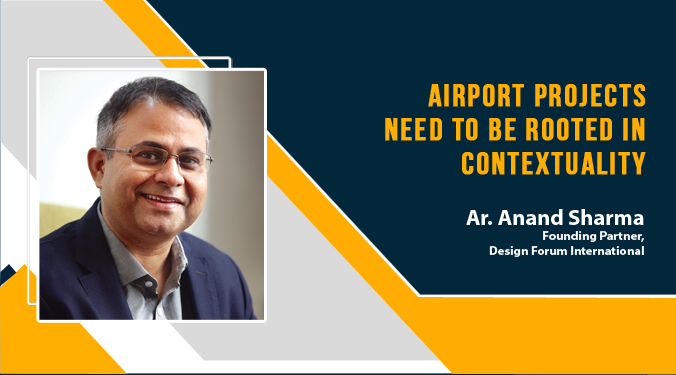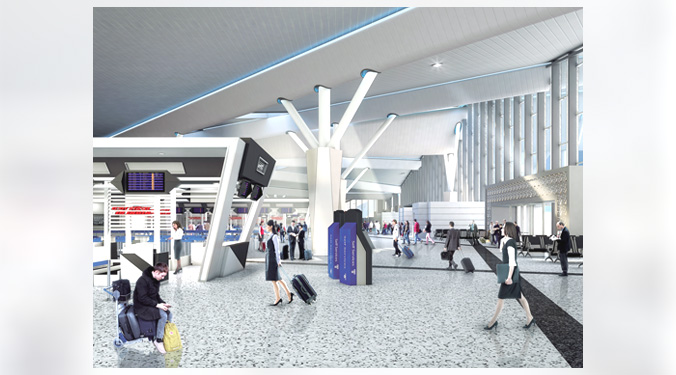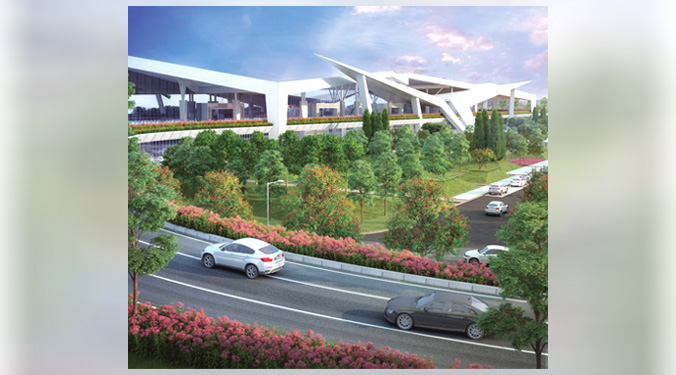Airport projects need to be rooted in contextuality

The Guwahati International Airport by Design Forum International is a case in point that addresses this aspect through its design.

Airports act as portals to the region they belong to. As the point of transit between two areas, airports are the primary facilitators for physical connectivity and access in this day and age of globalization. An airport campus is the first touch point for travelers visiting the region. Hence, they become an essential landmark that offers an initial peek into the salient features of the area.
The user group for this facility can be broadly divided into two categories. The first category comprises people who are emigrating or traveling away from the airport’s region. This user group is familiar with this region’s context, culture, and history. For them, airports provide the warmth of reminiscence. The second category comprises immigrants and travelers from all other parts of the world. Airport design needs to cater to this segment of users to give them a sense of arrival in this new environment.
Surpassing their functional space as a public transit space, airports must address the broader vision of socio-cultural aspects. They act as ambassadors of the region they represent. Projects of such a vast urban scale need to be rooted through contextuality to be more accessible to the user. The Guwahati International Airport by Design Forum International is a case in point that addresses this aspect through its design. While its representative of the capital city of Assam, it simultaneously acts as a gateway to the seven sisters of the Northeast. This urban project was driven
by weaving the region’s cultural diversity into its fabric.

Upon entering the facility, one meanders through the four-court bay derived from Assam’s terraced tea gardens. In addition to that, the airport houses a twenty-seven-meter-high glass pyramid that capture’s the northeastern biodiversity. As one descends from their flight and travels to baggage claim, they find themselves in this indoor forest dense with plantations. Visually connected by the glass, this piece of paradise flaunts indigenous flora and sculptural inserts for fauna that give visitors a glimpse into the region’s salient features.
The energy consumption of facilities like airports, which run round-the-clock, presents a creative challenge. For these instances, sustainability is a way of thinking and not an additional feature introduced later. The Guwahati Airport is designed with 4-Star GRIHA rating parameters. The focus on sustainability was imbibed right at the design inception stage when a conscious attempt was made to inter-weave the built form with the outdoors. The car park structures are designed to be covered with photovoltaic panels that generate almost 500 KW of solar energy.

Although developed as an ultra-modern, high-tech transit facility, airports can simultaneously attempt to convey a sense of history. For instance, the Bihta Airport in Patna, Bihar, designed by DFI, unfolds the rich history of the town of Patliputra (Patna). Patna is a historic city that stands at the past and future crossroads. The airport serves as a reminder of the varied versions of Patna that evolved with succeeding civilizations. The town sits on the banks of the Ganges and thus is culturally very significant. Taking inspiration from this, DFI envisioned the Bihta Airport as a river of time reflected in the outdoor landscape.
Airports are mega-structures comprising several other infrastructural facilities. Designing these with foresight allows for well-planned expansion and inclusion of upcoming technologies. In addition, durability and timelessness are essential for these superstructures to last for decades. Airports should effectively serve as a gateway into the region without compromising their functionality. For the user, it’s not merely a leap in space via an aircraft but is more of a jump into a new context and ethos.
For more info visit : https://www.designforuminternational.com/
Cookie Consent
We use cookies to personalize your experience. By continuing to visit this website you agree to our Terms & Conditions, Privacy Policy and Cookie Policy.









